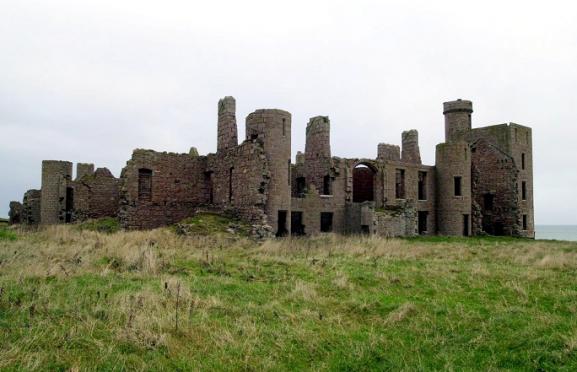A pensioner has launched a campaign to save a north-east castle renowned for being an inspiration for Bram Stoker’s horror novel Dracula.
Joe Allan wants to have Slains Castle, near Cruden Bay, taken away from developers and given back to the people of Scotland.
And the 82-year-old is even writing to First Minister Nicola Sturgeon to ask for her help.
Slains Castle was an inspiration to Stoker while he wrote parts of Dracula at his nearby holiday home in 1895.
Plans which divided the community – with some wanting the fortress preserved as a ruin and others concerned that without work, it will crumble into the sea – to turn it into holiday flats was secured in 2007.
But the proposals have stalled, and in 2013 the Edinburgh-based Slains Partnership was given another decade to work on its follow-up planning application, which will need to be approved before any work can begin.
Mr Allan, a retired civil servant, said: “The castle is superb, a magnificent ruin but it is exposed to the full fury of the elements and is deteriorating.”
Mr Allan, from East Kilbride, first fell in love with the castle after he read stories about it while staying with his grandparents in Elgin during World War II.
He added: “Slains Castle must belong to the nation and the people of Scotland, and the people who come to visit Scotland – not just a favoured few holidaymakers who can afford to stay there.
“This must come to pass, but not in the distant future.”
Neil Baxter, secretary of the Royal Incorporation of Architects in Scotland, said: “Architectural merit and historical merit are one thing when it comes to the importance of heritage buildings.
“There are a number of ruined castles on cliff tops in Scotland, however, Slains Castle has a unique and internationally important literary relevance and therefore has special merit and should have special consideration in terms of care and preservation.
“This is because all these assets are of huge benefit to Scotland in terms of our tourism and history of Scotland.”
Slains Castle, which is on Scotland’s Buildings at Risk register, was previously home to the Earls of Erroll, heads of the Clan Hay, before it was sold in 1916. Its roof was removed nine years later.
The Edinburgh-based Slains Partnership was unavailable for comment.
